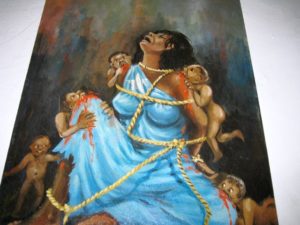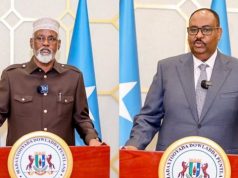
When Hodan Nalayeh was growing up she didn’t feel connected to her Somali culture and lamented the lack of a space where Somali culture, stories and art could be celebrated and find expression.
INTEGRATION TV, Hodan’s brainchild, is a YouTube channel that emerged out of that cultural void many diasporic Somalis feel, with the aim of “connecting Somalis worldwide.” With over 49,000 subscribers, her channel is gaining viewership , bringing in-depth, nuanced and compelling coverage to a community whose representation in the media doesn’t drift too far from unflattering and tragic discussions about war, famine, crime, terrorism or piracy.
“The idea of INTEGRATION TV initially started out as a TV show celebrating the success of Somali-Canadians” Hodan told me. “But as we found more stories, everything snowballed and my own journey of self-discovery ended up bringing millions of people with me”. The problem goes back to the early 90s when the Somali government collapsed. Dramatic headlines which you might argue reflected the seriousness of the situation on the ground took over US and to a lesser extent global media.
Various studies have since unpacked the oversimplifications that characterised many of those reports. According to Professor Catherine Besteman they relied too heavily on “racist assumptions, anthropological models and a popular craving for simplicity,” which worked to boost America’s self-image rather than accurately represent what was happening in Somalia.
Following the failure of Operation Restore Hope in December 1992, a US-led UN supported humanitarian intervention in Somalia, US media widely circulated images of people suffering from famine, and dead US troops being dragged through Mogadishu. This created a recurring association between Somalis and violence, which has largely endured to this day.
It also gave birth to the first Hollywood blockbuster about Somalia in 2001 called Black Hawk Down, a film about Operation Restore Hope. Made with the full cooperation of the US military, Deputy Secretary of Defence Paul Wolfowitz would describe it as a “powerful film.” For many Somalis, however, the reception wasn’t so warm.
The film glorified US militarism and the apparently benign US mission to alleviate the suffering of the Somali people. It didn’t accurately attempt to raise awareness of the root causes of the violence or the crimes committed by US and UN forces against civilians.
Captain Phillips, a film about piracy off the Somali coast followed almost a decade and a half later. It had similar shortcomings such as a lack of context, and a stereotypical depiction of the Somali as violent, rough and savage. Both films relied on narrative arcs that coded the American characters as the benign victims of Somali bandits and vandals, bent on a congenital commitment to violence.
“At the time, I didn’t really understand the narrative in those films” Hodan says. “But when I became more conscious of the media, and the messages delivered about certain countries and certain cultures, it made me realize that movies like that can do so much damage.” “That is the image people have of us today,” she continues. “A chaotic country, with pirates and maniacs and all the other negative images that came from those movies. Unfortunately, those messages have played a major role in shaping our narrative.”





